China’s capital is Beijing, which is both modern and ancient, with temples and modern skyscrapers located all around the city. This historical and cultured metropolis brings forth a unique amalgamation of new and old, with temples and palaces carved from rich ancient history. There is remarkable progress on the other side. This article will assist you in navigating through the highlights ‘splendor’ of historical cities, cave temples, stunning gates, renowned streets, and magnificent urban architectural structures. This guide will assist you in making the best out of the ancient beauty for military enthusiasts, history buffs, and first-timers who wish to explore Beijing, making it unforgettable.
What Are the Top Places to Visit in Beijing?
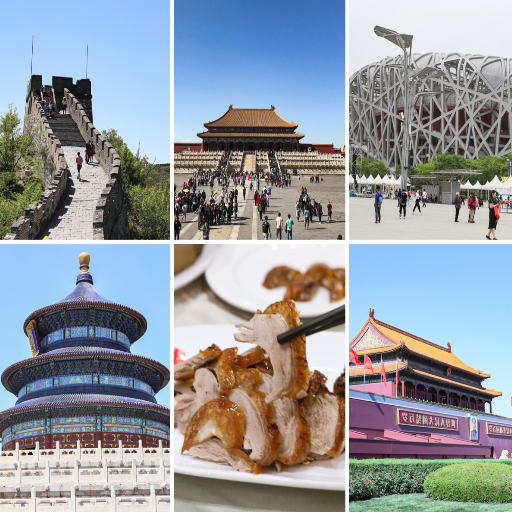
Exploring the Forbidden City
The Forbidden City, or the Palace Museum, is an architectural wonder at the heart of Beijing. It is one of the city’s prominent landmarks and a UNESCO World Heritage Site. It served as the imperial palace for 24 emperors over nearly 500 years. Constructed during the Ming Dynasty in the early 15th century, it today consists of more than 980 ancient buildings spanning over 180 acres of land. The magnificent proportions and details that make up these structures can only be attributed to the refined skill of Chinese builders during the imperial era.
Area: 180 acres with a rectangular shape of 961 meters in length and 753 meters in width.
Construction: Traditional wooden structures built with imperial red walls and yellow glazed roofs signifying red walls and yellow roofs signify the emperor’s supremacy.
Importance: The palace— Invalid citation—housed the emperor, empress, and court. The Forbidden City represents the center of power of the Chinse dynasties.
Cultural Treasures: More than 1.8 million pieces of art and historic artifacts are stored inside the museum.
Exploring the Forbidden City lets guests enjoy its majestic yards and halls, like the Hall of Supreme Harmony and the exquisite royal garden located on the north side. There, tourists can appreciate the stunning history and heritage of the country. Be sure to allocate half a day if you wish to fully relish the impressive sight, which is sure to leave anyone in awe.
Visiting the Great Wall of China
Stretching over 13,000 miles across northern China, the Great Wall is one of the world’s most remarkable and recognizable architectural structures. Apart from once functioning as a defense mechanism against invasions, the wall represented power and unity for the empire. Serval notable sections like Mutianyu, Badaling, and Jinshanling attract tourists worldwide due to their breathtaking views and unique experiences.
Badaling: This section is the best preserved and most accessible, boasting numerous facilities and cable cars for visitors. Its proximity to Beijing is a great plus.
Mutianyu: Although this section is not very popular among tourists, it turns out to be a gem boasting stunning scenery. This part also has a fun toboggan ride for children.
Jinshanling: Great for hiking, this section is known for its rugged beauty, authentic appeal, and stunning vistas combined with partially restored wall sections.
Important Information For Visitors:
The Best Times to Visit are spring (April-May) and Autumn (September-October) due to their comfortable temperatures and beautiful scenery.
Average Entrance Fees: Approximately 40-60 CNY ($5-8 USD), dependent on the section of interest.
Transportation: Common methods of traveling to the wall from Beijing include Buses, tours, or private drivers. Depending on the method of travel, it costs between 20 and 300 CNY ($3-40 USD).
Preparation: Walking shoes, sunscreen, water, and a willingness to walk or hike (depending on what section of the wall you are visiting) are necessary.
From my experience, visiting the Great Wall is breathtaking. It combines picturesque landscapes, historical significance, and impressive ancient engineering. Be sure to select a section based on your desired casual or more rugged activity.
Highlights of Tiananmen Square
Tiananmen Square is a must-see destination for any tourist due to its variety of features and locations in the context of the history of the people of China. It is located at the center of central Beijing and is a perfect reflection of the instilled heritage and history of China. It is also well known for being one of the greatest public squares in the world. It covers an area of 440,000 square meters. It attracts tourists from all around the globe. The Standout Features of Tiananmen Square are:
Tiananmen Gate (Gate of Heavenly Peace): Marked by a portrait of the great Chairman of the People’s Republic of China, Mao Zedong, prominently hanging on it, this gate is the icon of modern China. It can easily be recognized by the people of China and is cherished by them.
The Monument to the People’s Heroes: An emblem carved in granite and marble, emerging from the earth at a towering height of 38 meters, tells the tale of China’s liberators and revolutionaries who laid their lives for the noble cause of self-government and independence.
The Great Hall of the People: Erected in the western zone of the square, it marks China’s foreign system legislative meeting and serves as an additional commemorative hall for honoring the celebratory state honors.
Mao Zedong Memorial Hall: Famous to the core of history buffs, Chairman Mao Zedong’s body is preserved and displayed in a crystal coffin, allowing ample hours of visitation for his keen followers and admirers.
National Museum of China: This museum, characterized by revolutions and ancient Chinese history, is located on the east side of the square and offers subsidized exhibits for people interested in seeing National landmarks and monuments.
When visiting, make sure to pay attention around, as the locals do have rules that should be followed due to the square’s sensitive cultural and logical value. The great region and its adjacent facilities combine to provide a new experience, bringing together politics, culture, and history in one place.
What Makes the Temple of Heaven Special?
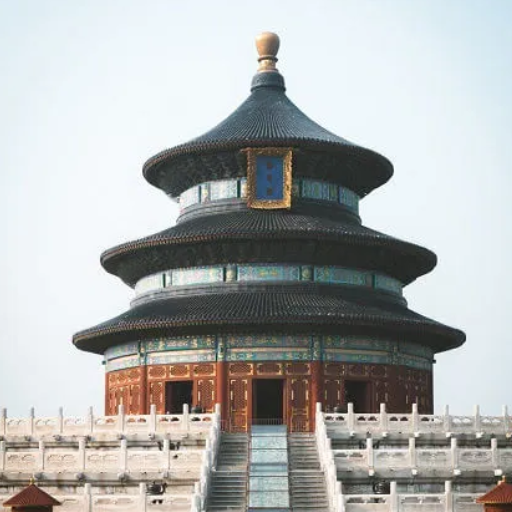
The Temple’s Architecture and Design
The beauty of the Temple of Heaven as a Chinese architectural wonder is unrivaled in blending symbolism with craftsmanship. Originally built during the Ming Dynasty and later extended by the Qing emperors, the temple’s main purpose was to pray for bountiful harvests during imperial ceremonies. Heaven’s circular structures and Earth’s square bases are directly correlated with ancient cosmological beliefs and serve as representations of cosmology.
Important measurement parameters include the Hall of Prayer for Good Harvests, a circular, tri-gabled wooden structure with a height of 38 meters and a width of 30 meters solely constructed with wooden pegs instead of nails. Another hallmark feature is the Circular Mound Altar, which is constructed with three concentric tiers of marble representing the numeral “9,” which symbolizes eternity and harmony. These highlights accentuate the temple’s intricate design alongside its spiritual and cultural greatness.
Cultural Importance of The Hall of Prayer for Good Harvests
The Hall of Prayer for Good Harvests is a fine example of how the architectural principles of bygone China were intertwined with its spiritual beliefs. It served as the central area for ritual ceremonies where Ming and Qing emperors surrendered prayers and sacrifices to Heaven in hopes of receiving blessings for good harvests. With each sacrifice offered, the emperor assumed the role of the “Son of Heaven,” a being who, in simple terms, stood in the middle between Heaven and the human world and kept the world in peace. The combination of religious architectural symbolism and functionality exceeds the importance of the site in Chinese culture and history.
The Hall is an ingenious construction from a technical point of view, as it employs architectural features to express Chinese cosmology. While the triple-gabled roof and circular shape represent the heavens, the wooden structure with no nails shows a simpatico with nature. Its height is thirty-eight meters and a diameter of thirty meters; this structure combines symmetry with florid proportions by the Chinese philosophy of yin-yang and balance. Also, the building’s orientation towards the cardinal points was carefully constructed as a telescope for ancient agricultural astronomy. These engineering features not only revealed the genius of the architect but also emphasized the culture and religion behind the hall constructions.
Therefore, the Hall of Prayer for Good Harvests is more than a ceremonial structure. It is a tangible symbol of harmony, coexistence, and respect for nature. The enduring legacy has become, over the generations, a symbol of China’s rich historical and cultural identity. The hall is now part of a UNESCO World Heritage Site, significant for its architectural splendor and the stories it tells. The long-lasting importance of culture still today fundamentally shapes the role of the hall as the structure guiding the past to the modern days, helping to keep the unique combination of features in its design and history and to evoke admiration.
Activities in the Temple of Heaven Park
In the Temple of Heaven Park, everyone can find something that suits them, whether traditional or modern activities. Locals can indulge in tai-chi (a form of martial art that focuses on balance and relaxation) in the early mornings of the park. The park also attracts visitors who wish to partake in group dancing, musical shows, or the traditional Chinese exercises known as Qigong. For those who want to rely on leisure activities, kite flying is a widely admired hobby in China, while others prefer to use water brushes on the stone pathways to portray calligraphy.
The Park also hosts different sporting activities and games. Elderly locals can commonly be seen playing card games or Chinese chess, which help foster a sense of community with their hobbies. This amazing park also has seasonal events and performances, which add to its lively nature. Along with the cultural practices, visitors can take some time off to walk around and appreciate the nature inside Temple of Heaven Park.
Important sites like the Hall of Prayer for Good Harvests and the Circular Mound Altar offer visitors amazing opportunities to learn about and discover unique historical Chinese ceremonies and cultural activities.
Why Should You Visit the Summer Palace?
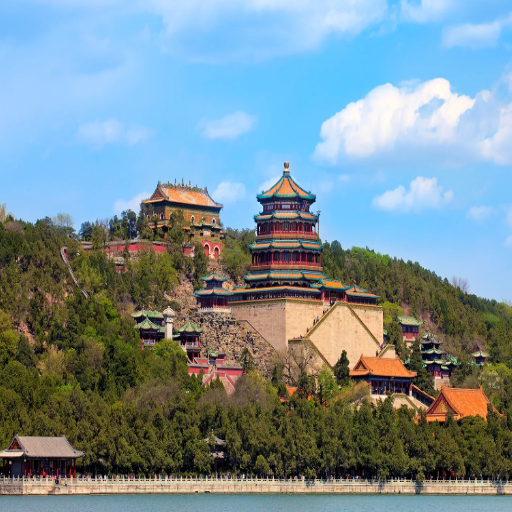
Exploring The Gardens And Lakes Of Summer Palace
The Summer Palace features magnificent calm lakes and stunning gardens that gracefully represent Chinese landscape design. It is a significant piece of imperial garden design. It has over 290 hectares of beautiful nature and exceptional human-made structures. Longevity Hill, which towers 60 meters in height and offers gorgeous views of the surrounding landscapes, is one of the main features, along with Kunming Lake, which holds about three-fourths of the water.
The Kunming Lake is an engineering wonder developed from scratch during the Qing Dynasty. It is estimated to have a circumference of around 7.8 kilometers and is adorned with beautiful islands and bridges. While there are many beautiful spots, one of the most picturesque is the Seventeen-Arch Bridge, which connects with the Eastern Causeway and is mesmerizing, especially at sunset/sunrise.
The gardens include numerous seasonal flowers, eye-catching pathways, reflective pavilions, and the picturesque Garden of Harmonious Pleasures. Together, they represent not only nature and humanity working together but also centuries of Chinese artistry and philosophical thought, making the Summer Palace an extraordinary destination for cultural, historical, and aesthetic exploration.
The Story of Longevity Hill
A prominent part of the Summer Palace, Longevity Hill is another example of a place with a profound cultural and architectural history rich with human and natural civilization. It was initially called Golden Hill and became famous during the Yuan Dynasty. In the Qing Dynasty, it was renamed “Longevity Hill” when the Qianlong Emperor’s mother turned 60 on her birthday. The hill rises about 60 meters in height and forms the base of the Kunming Lake, from where its soil was taken.
Serpentine walking paths, terraces, elaborate pavilions, and other structures on the hill are built in such a way as to reflect harmony and longevity. Other structures of note include the Hall of Dispelling Clouds and the Tower of Buddhism that sits on top of the hill. The hill’s architecture was built with ancient feng shui principles in mind, which aid in its beauty. The fabricating and use of natural and formed features show the artistry of landscape construction during the Qing Dynasty while depicting the philosophy of constant change and balance.
Art and Architecture at Kunming Lake
Kunming Lake had to fulfill several functions to be integrated artfully into the Summer Palace’s landscape. It is shaped like a classical Chinese garden with a lake in the middle. The lake covers around 2.2 square kilometers, nearly three-quarters of the Summer Palace’s area. The lake’s design is said to be inspired by West Lake in Hangzhou, which is beautiful and symmetrical.
From the East to Nanhu Island, the 17-Arch Bridge is one of the most stunning architectural features around Kunming Lake. This 150-meter-long bridge is graced by 544 carved lions, each with a different design on the balustrades. Other notable structures at the lake are the Pavilion of Heralding Spring and the Bronze Ox statue, representing the Bronze Age and the primitive legends of flood prevention.
Kunming Lake and its neighboring sites demonstrate affection for nature and beauty, which adds loveable culture and philosophy to the environment. Combining these features has turned Kunming Lake into an extraordinary masterpiece of Qing Garden architecture and planning.
What Are the Unique Features of Hutongs?
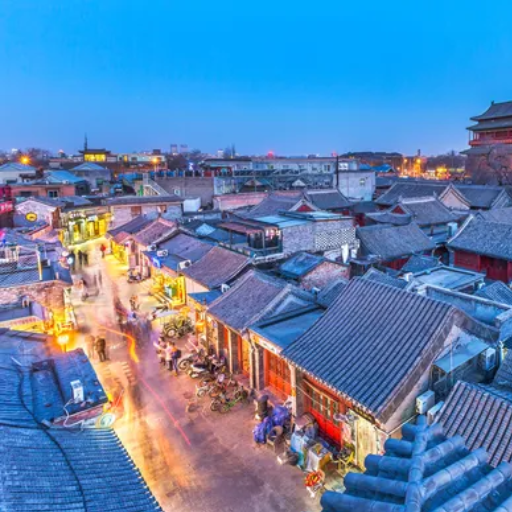
The History Behind Hutongs
The essence of the word “hutong” means narrow alleys that date back to the Yuan Dynasty (1271- 1368). They were built for residence purposes as social and architectural set-ups were prevalent. The haulage system was in a grid shape, which made it a land feature and enabled ease of interaction within the community. These alleyways with siheyuan, or traditional courtyard homes, have been an essential part of Bejing’s history for ages.
To be more precise, hutongs were once used to drain and ventilate cities, which integrated effective urban planning. The climate of the city determined these parameters. Today, hutongs remind people of ancient civilizations’ urban planning methods, which are nonfunctional now but still serve as a living heritage.
Exploring the Beauty of Nalouoguxiang
While in Nanluoguxiang, I was impressed with the old and modern buildings coexisting in this space. The narrow streets filled with traditional siheyuan homes were a lovely sight owing to their old historical value and significance in contemporary city life. The Hutongs in the area are not just beautiful but also practical in terms of city planning. For example, the original designs at that time ensured water was drained because of the gentle slopes, and the clever placement of the alleys allowed for ventilation.
Considering these factors, it is evident that the direction of the alleys (north-south) allowed for better ventilation during Beijing’s hot summers and cold winters. The biomechanical systems in place certainly help control flooding, which is crucial for the longevity of the buildings. My walk around Nanluoguxiang was pleasant, and the design approaches to modern and historical buildings were a marvel to appreciate.
Living Like a Local in The Hutongs
Walking along the Hutongs, it was clear how local life functions around these narrow lanes, combining modern and traditional elements. Residents frequently gather in small courtyards where they chat or play games, which enhances the sense of community. Routine interactions, such as purchasing fresh fruits and vegetables from local street vendors or eating meals with fellow residents, offer a glimpse into the simplicity and warmth of life in these neighborhoods. The width of the alleys, which generally range from 6-9 meters, enable these social interactions while ensuring adequate circulation of fresh air.
The layout of the hutongs has practical benefits in terms of functionality. The hutongs are oriented north-south with an east-west alignment. This positioning creates fresh airflow, which helps regulate temperature throughout the year. In addition, the placement of drainage systems below buildings at slopes of 1 to 3 percent prevents rainwater from pooling and helps to protect the integrity of older and newer buildings. These limits show the careful planning that aids charm and function in a modern city.
What Can You Expect from Universal Studios Beijing?
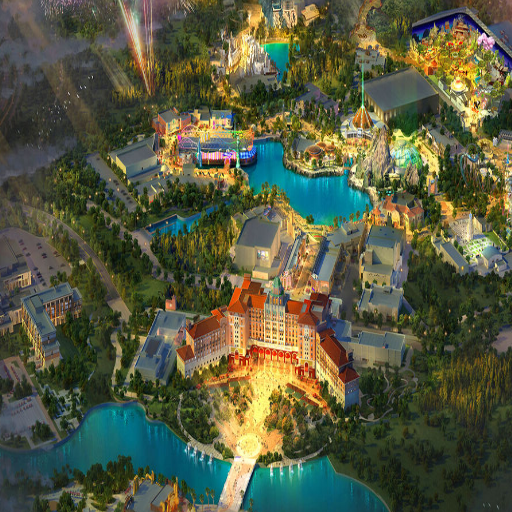
Summary of the major attractions at Universal Studios Beijing
Universal Studios Beijing is no less jaw-dropping than its American counterparts. Like any theme park, it has a wide variety of rides and attractions to meet the interests of young and old people. The various zones in the park are Hollywood Boulevard, Kung Fu Panda Land of Awesomeness, WaterWorld, and Jurassic World Isla Nublar, among others. Each zone is breathtakingly decorated with excellent environments that make one feel like they have walked into a movie scene. For example, the Jurassic World Isla Nublar showcases fantastic animatronic figures and highly advanced rides, such as a moving rollercoaster, which gives you the thrill of being chased by a dinosaur.
All rides and attractions in the park have been designed to be risk-free and entertaining. They integrate state-of-the-art technologies such as hydraulic and magnetic brakes, increase precision, control, and reliability. Additionally, crowd control is another factor in which Universal Studios Beijing excels. Their waiting areas funnel the visitors in and out to help avoid congestion. The walkways are built with strong materials and have a gentle slope, usually between 5 and 8 percent, making it easy for strollers and wheelchairs to pass through stylish designs while also looking good.
There’s nothing quite like receiving joyous moments as the combination of the latest entertainment, modern technologies, and brilliant city planning keeps every visitor happy in this happy place.
Top Rides and Experiences Awaiting For You
In my opinion, the best rides and experiences will cater equally to fun and accessibility. As for thrill-seekers, high-speed roller coasters such as the “Sky Surge” ensure safety while delivering speeds of up to 75 mph due to the precise engineering of its steel tracks. This ride has a mind-blowing height of 200 feet and has magnetic braking systems that ensure smooth deceleration. This enables heart-pounding moments while also meeting safety standards.
For those seeking fun at a more moderate level, “Cosmic Voyage 4D” combines virtual reality with real-life motion. This attraction utilizes advanced motion-platform technology and sound effects to create a fully immersive experience. The motion system provides six degrees of movement and is ergonomically friendly, ensuring comfort is guaranteed for a wide range of guests.
If accessibility is a priority, I highly recommend “Mystic River Cruise,” which is designed with wide entry ramps and transfer seats for wheelchairs. This cruise route provides a maximum incline of 6% along its boarding platforms, allowing for stunning views while adhering to ADA (Americans with Disabilities Act) requirements.
All the experiences are designed to blend cutting-edge innovation with thoughtful engineering, ensuring that tourists of any preference or ability can have great experiences.
Your Guide for a Visit to Universal Studios
If you have never visited Universal Studios before, I have some suggestions for you. Start by confirming the park’s mobility provisions, which might be useful if you have certain physical or sensory restrictions. All attractions and buildings are ADA-compliant, meaning there are ramps, transfer seats, and tactile walkways that serve various needs. For instance, the Mystic River Cruise has a 6% maximum slope for easy boarding with a wheelchair transfer.
You should also consider when you go to the park, as it can help minimize the time you have to wait in line. Most visitors will not be present during the week or off-peak seasons, which usually means shorter wait times. If you use a wheelchair or other aids, showing up earlier than most people will make traveling around the parks significantly more manageable because of the reduced amount of people, and Universal’s Accessibility Pass allows for prioritization at rides.
Do ensure that any aids you require, like wheelchairs or walkers, meet the weight and size parameters for different rides or areas. This will ensure safety and compatibility during the visit. With thoughtful planning done ahead of time, the time spent in this amazing, accommodating park will yield unforgettable experiences.
Frequently Asked Questions (FAQs)
Q: What should first-time travelers see in Beijing?
A: For first-time travelers, it is a good idea to visit the iconic sites in Beijing, such as the Forbidden City, the Great Wall at Badaling or Mutianyu, and the Summer Palace. Also highly recommended is visiting the Lama Temple, which has beautiful Tibetan Buddhist architecture.
Q: Why is The Lama Temple important in Beijing?
A: The Lama Temple, or Yonghe Temple, is a famous Tibetan Temple in Beijing and is recognized as a notable cultural site. It was built in the Qing dynasty as an emperor’s son’s residence before becoming a temple. Tourists can visit and revel in its detailed design while being educated on Buddhism.
Q: What is the best way to visit Hohui Jaw in Beijing?
A: Hutongs, or Beijing’s alleyways, can be walked around with guided tours or even pedaled through on bicycles. Other places of note include Nanluoguxiang, which is filled with cafes, shops, and courtyard homes. Unlike modern structures that dominate most parts, these represent Beijing’s rich culture and history.
Q: What is the ideal season for sightseeing in Beijing?
A: It is ideal to travel to Beijing in spring, which runs from April to June, and also in Autumn, from September to October. The weather is mild and pleasing. This allows visitors to enjoy almost all the remarkable outdoor attractions in Beijing, like the Great Wall and parks like Jingshan, which offer stunning views of the Forbidden City.
Q: What do you want to know about planning a visit to the Forbidden City?
A: The place is enormous, so ensure you have adequate time to visit. Also, check the crucial details well in advance, like pre-booking tickets to avoid a long queue and checking the required timing and opening hours. A guided tour can certainly add spice to your understanding of the Imperial heritage of the Ming and Qing dynasties.
Q: Lesser known Famous Landmarks of Beijing?
A: Currently, there are several well-known places in Beijing, such as the Great Wall, Forbidden City, and more. However, places such as the Confucius Temple and the National Museum of China are known to have a lesser crowd. Moreover, visiting lesser-known Hutong regions along with the 798 Art Zone is a treat away from the known tourist regions.
Q: How do I add a visit to the Great Wall to my Beijing itinerary?
A: When adding a trip to the Great Wall, plan Beijing first and select a section that fits your schedule. For time-efficient visits, choose Badaling, and for more picturesque ones, Mutianyu. Set aside an entire day for traveling and exploration, and consider transport, time of year, and season before planning Great Wall visits.
Q: What local delicacies would you recommend during my travel to Beijing?
A: In Beijing, a must-try is the Peking duck, which is world-famous for its skin. Wangfujing and the hutongs offer a range of local street food, and you can sample traditional snacks and dishes representative of Beijingers’ culinary culture.
Q: What are the advantages of guided tours of China for travelers visiting Beijing?
A: Guided China tours significantly improve your experience in Beijing because the guides offer detailed history and information regarding places of interest. Guides tell remarkable stories about places, walk you through the city, and help you manage time through key sites, including the Forbidden City and the Great Wall.